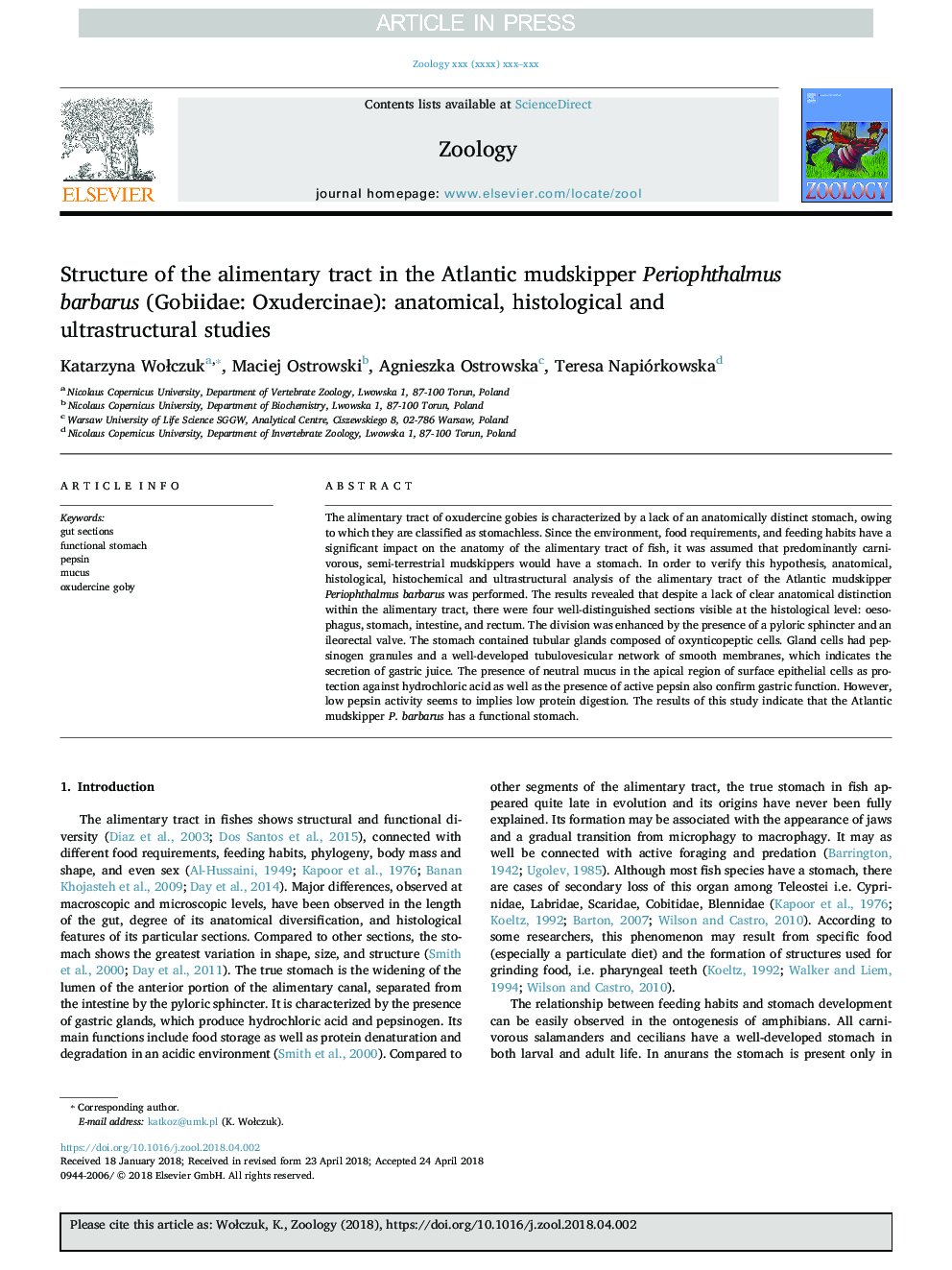| Article ID | Journal | Published Year | Pages | File Type |
|---|---|---|---|---|
| 8626957 | Zoology | 2018 | 8 Pages |
Abstract
The alimentary tract of oxudercine gobies is characterized by a lack of an anatomically distinct stomach, owing to which they are classified as stomachless. Since the environment, food requirements, and feeding habits have a significant impact on the anatomy of the alimentary tract of fish, it was assumed that predominantly carnivorous, semi-terrestrial mudskippers would have a stomach. In order to verify this hypothesis, anatomical, histological, histochemical and ultrastructural analysis of the alimentary tract of the Atlantic mudskipper Periophthalmus barbarus was performed. The results revealed that despite a lack of clear anatomical distinction within the alimentary tract, there were four well-distinguished sections visible at the histological level: oesophagus, stomach, intestine, and rectum. The division was enhanced by the presence of a pyloric sphincter and an ileorectal valve. The stomach contained tubular glands composed of oxynticopeptic cells. Gland cells had pepsinogen granules and a well-developed tubulovesicular network of smooth membranes, which indicates the secretion of gastric juice. The presence of neutral mucus in the apical region of surface epithelial cells as protection against hydrochloric acid as well as the presence of active pepsin also confirm gastric function. However, low pepsin activity seems to implies low protein digestion. The results of this study indicate that the Atlantic mudskipper P. barbarus has a functional stomach.
Related Topics
Life Sciences
Agricultural and Biological Sciences
Animal Science and Zoology
Authors
Katarzyna WoÅczuk, Maciej Ostrowski, Agnieszka Ostrowska, Teresa Napiórkowska,
